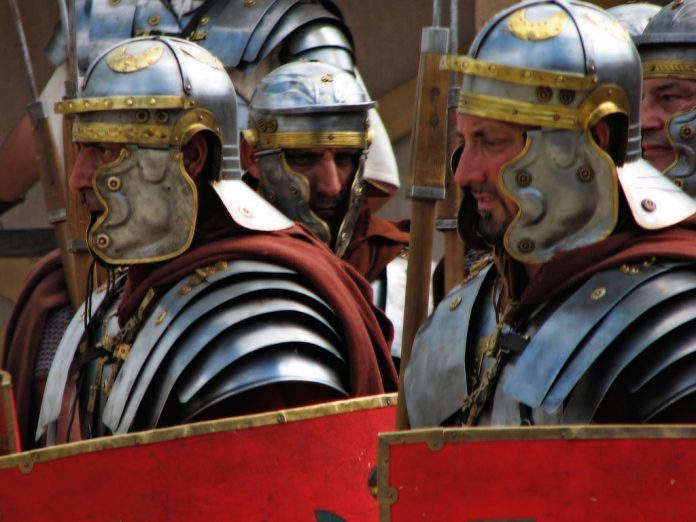The discovery of the remains of a huge Roman barracks in Rome made international news on the 16th May). The remains were discovered during excavations for a new line and station on the Rome metro, near the Colosseum: see ‘Italy unearths huge Roman barracks during Rome metro dig’ at www.bbc.co.uk/news/world-europe-36311156.
This must be Roman military barracks month, on the 13th May MOLA (Museum of London Archaeology) announced the publication of their report on the Roman fort which they investigated at Plantation Place in Fenchurch Street in London in 1997-2003: see www.mola.org.uk/blog/roman-fort-built-response-boudica%E2%80%99s-revolt-discovered . At the end of April (27th April), the discovery of a huge Roman military complex, including barracks, at Exeter and Devon Crematorium in Exeter in Devon also made the news: see www.exeterexpressandecho.co.uk/Incredible-Roman-army-base-Exeter/story.html. This summer’s season of the annual excavations on the site of Vindolanda Roman fort are, of course, currently underway and the team regularly Tweet photos of their finds. (http://www.vindolanda.com/_blog/excavation)
Roman barracks
The remarkable remains of the Roman barracks in Rome cover 9,000 square metres and include 39 rooms, a 100-metre long hall, and a burial ground. The barracks have been dated to the 2nd century and are thought to have housed the emperor Hadrian’s Praetorian Guard, at the heart of the Roman empire. The remains are to be incorporated into the new metro station which is planned to be the city’s first ‘archaeological station’. The military site in Exeter includes two barrack-blocks and its discovery has been described by an archaeologist on site as ‘very exciting’: the site has been dated to the second half of the 1st century AD. It is thought to have been part of an important complex of Roman military sites in the south-west during the Roman conquest of Britain. The London fort was later, having been built after the Boudican revolt of AD 61, when native Britons rebelled against the Roman occupation and burned the Roman towns of St Albans, London and Colchester to the ground. London also has an even later fort (at modern Cripplegate), dated to AD 120, but no evidence of a fortress or fort pre-dating the AD 61 fort has yet been found there.
The site of the Roman legionary fortress at Colchester, including the remains of barrack-blocks, was identified by the Trust in 1973, within the western part of the walled town centre. The fortress at Colchester was built in AD 44 and it was probably the first Roman fortress built in Britain. The fortress was decommissioned in about AD 49, when the Roman army moved north and west to extend the colonisation of Britain. The fortress was converted for use in the Roman civilian town which was founded here in about AD 49. Each barrack-block would have housed a legionary ‘century’ and included centurions’ (officers’) quarters: there would have been 60 barrack-blocks in this fortress. The fortress here was large – it was 50 acres in area – and it seems to have never been finished as a large part of the area was vacant. However, it also included a large fortress annexe, which is an unusual element. No two Roman forts are the same, but they were built to similar plans. Coins to pay the soldiers may have been produced by a mint nearby at Sheepen.
Read more about the Colchester Roman fortress in Colchester Archaeological Report 6: excavations at Culver Street, the Gilberd School and other sites, 1971-85.
Source: Colchester Archaeology Trust

